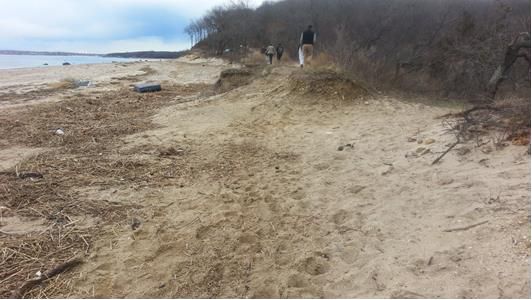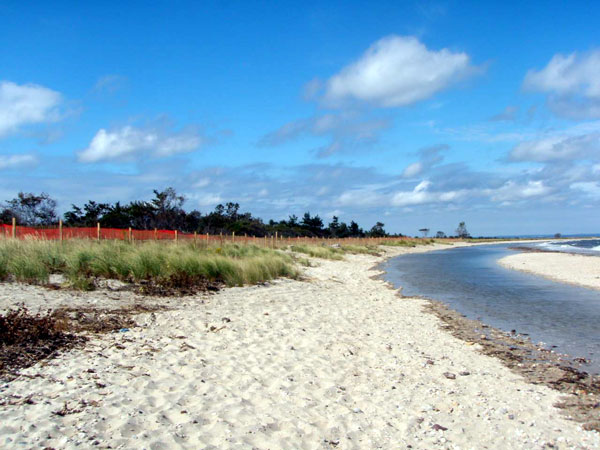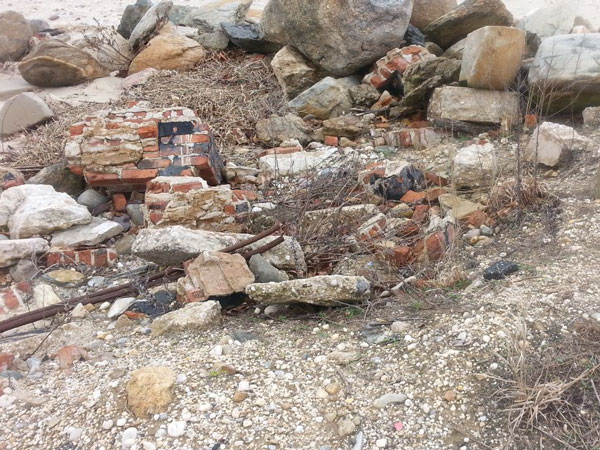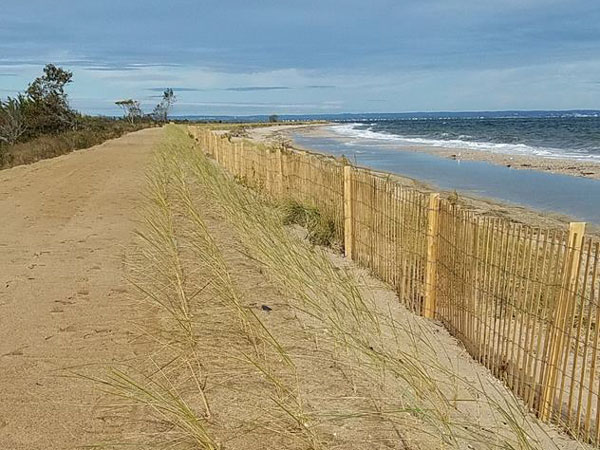Berm and Sand Trail Restoration
 Following Superstorm Sandy in 2012, the most noticeable change to the beach along the peninsula that extends west along the Long Island Sound was the erosion of the berm and sand trail that separated the beach from the tidal wetland. The trail to the timber boardwalk known as Plank Road was badly damaged with three locations where the erosion allowed the storm surge from the Sound to over-wash into the tidal marsh, opening the area up to potential further damage.
Following Superstorm Sandy in 2012, the most noticeable change to the beach along the peninsula that extends west along the Long Island Sound was the erosion of the berm and sand trail that separated the beach from the tidal wetland. The trail to the timber boardwalk known as Plank Road was badly damaged with three locations where the erosion allowed the storm surge from the Sound to over-wash into the tidal marsh, opening the area up to potential further damage.
The berm followed the historic alignment of Plank Road extending from Fishermen’s parking lot to the timber boardwalk and extending as a sand trail to Lloyd Point. Prior to the storm, the 1,600-foot section of the sand trail leading to the timber boardwalk was a raised berm with vegetation on each side. The berm erosion caused a substantial amount of the base materials to wash out from the trail and litter the beach, causing both a hazard to visitors and disturbance the natural aesthetic of the site (photo 2). After the storm, the original trail location was dangerous to walk along, forcing Park visitors to walk around the eroded areas and rubble. During high tides, the eroded beach route became inaccessible for maintenance and emergency vehicles.
The project was funded by a $225,000 grant from the Hurricane Sandy Disaster Relief Assistance Grant for Historic Properties that was obtained by the Caumsett Foundation. The grant covered the full cost of the engineering and bid documents, environmental permitting and construction costs.
The project restored the alignment of the original Plank Road from Fishermen’s parking lot to the timber boardwalk and ensures Park goers access along this trail through the rebuilding of the berm structure with the sand trail along the top (photo 3). The work to restore the trail included reconstructing the dune by relocating the boulders and rubble from that beach back to the dune base and removing visible debris and rubble materials from the beach (Photo 4). The work also included replacing the sand on the top of the berm and replanting the Sound side of the berm with native dune vegetation and installing snow fence at the toe of the dune to further aid in dune building over time.
Restoring the shoreline has allowed the alignment of the historic Plank Road to remain intact and has provided safe access of Park visitors and emergency personnel. It has also offered an alternative to walking on the shoreline, reducing the disturbances to nesting areas. Rebuilding the berm has protected the integrity of the tidal wetlands behind the berm by protecting them from the further wash-overs from the Sound.



